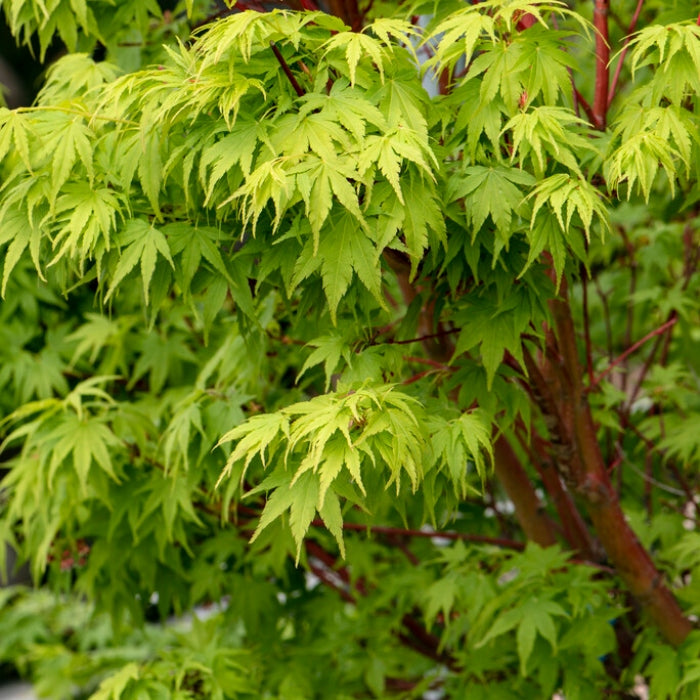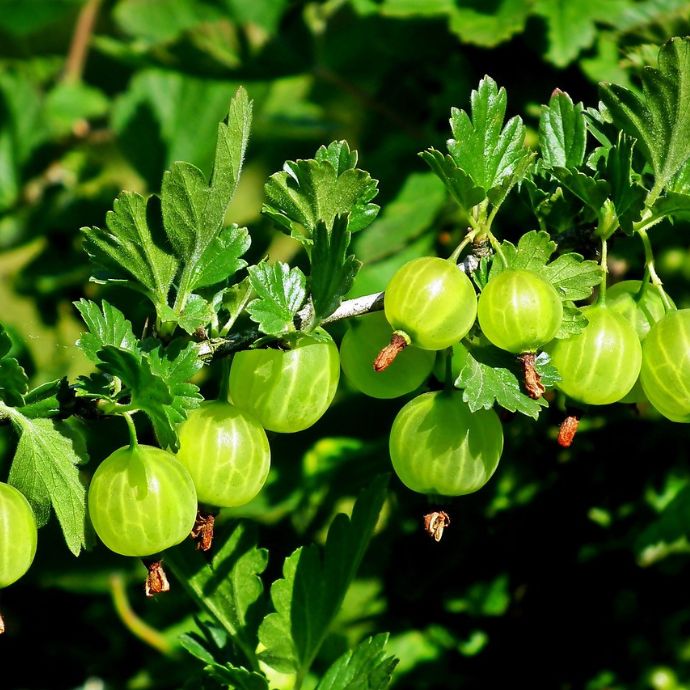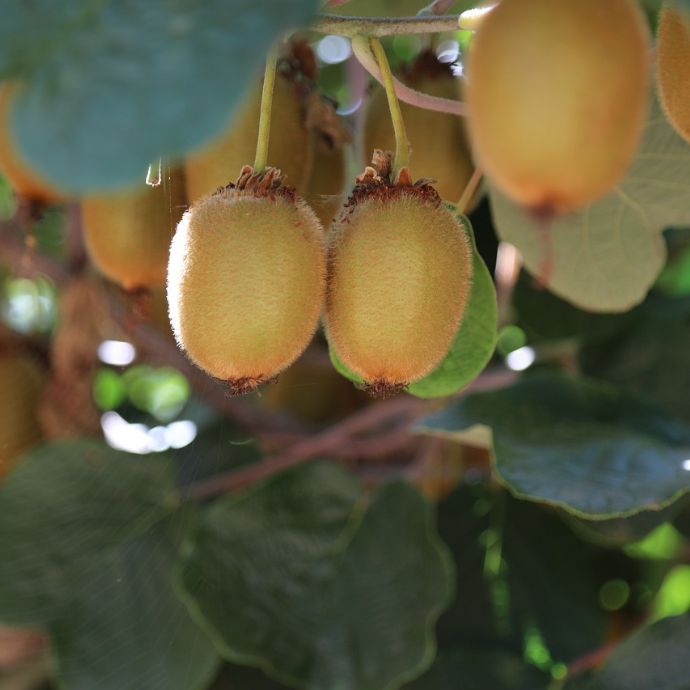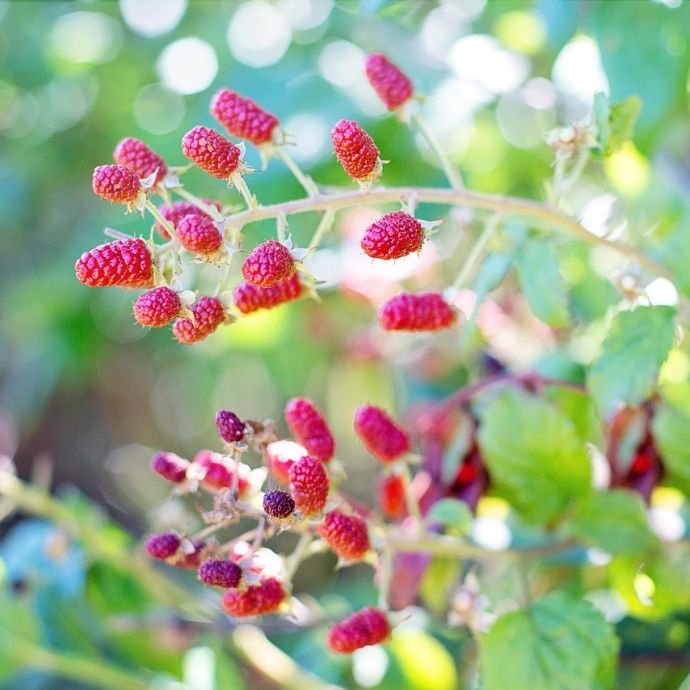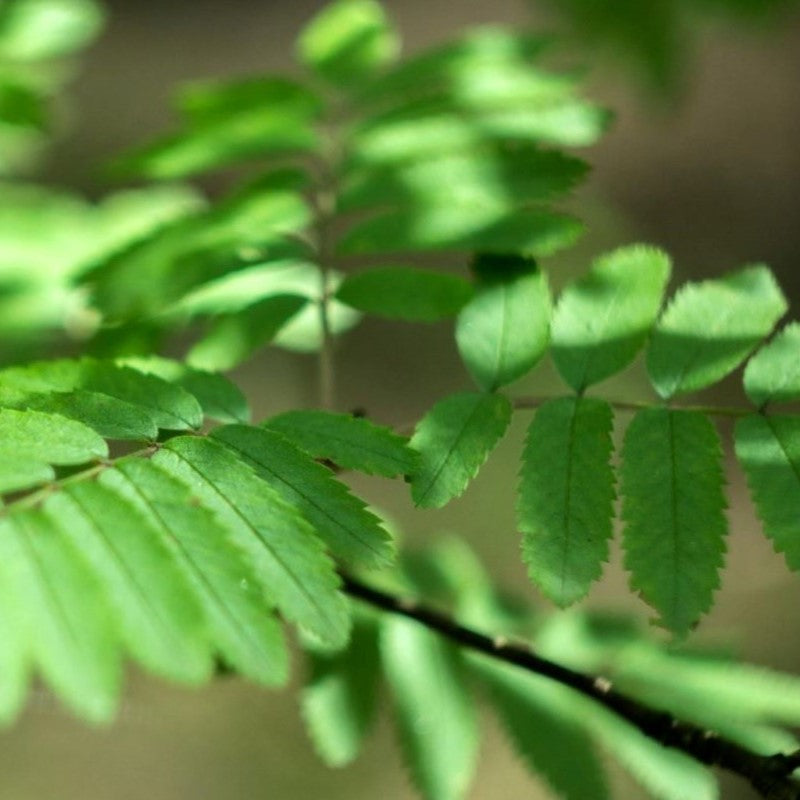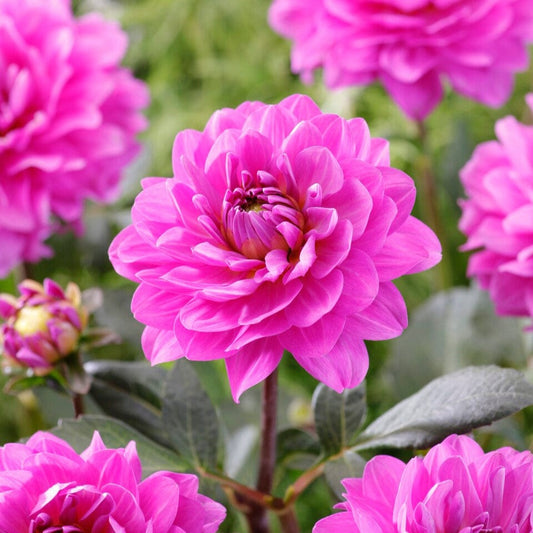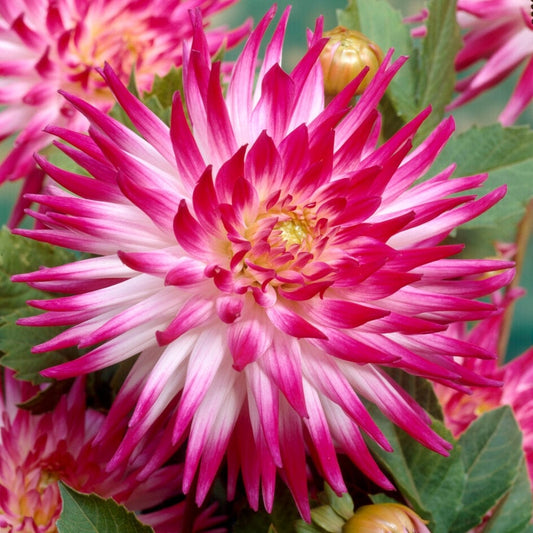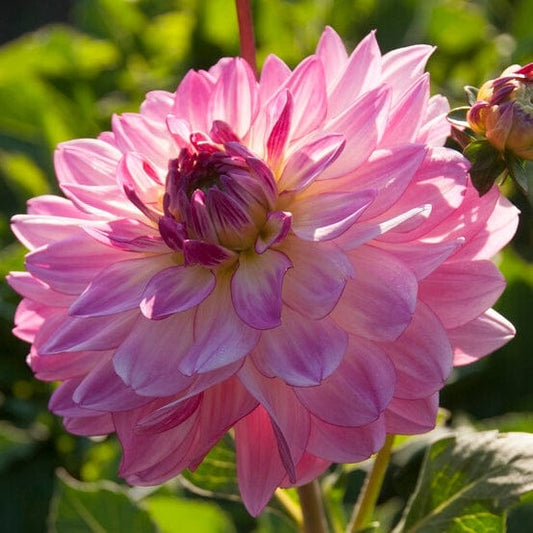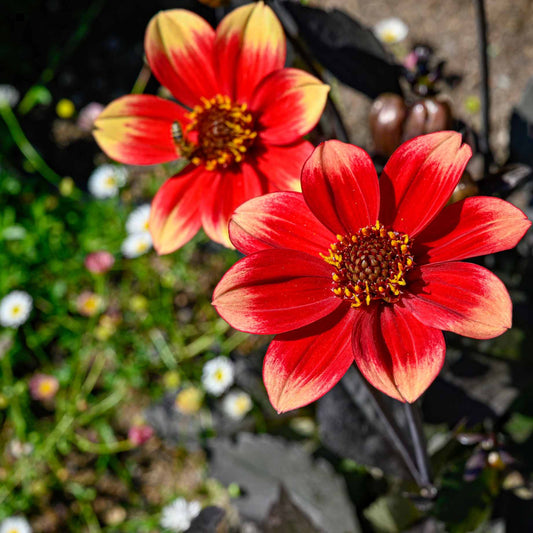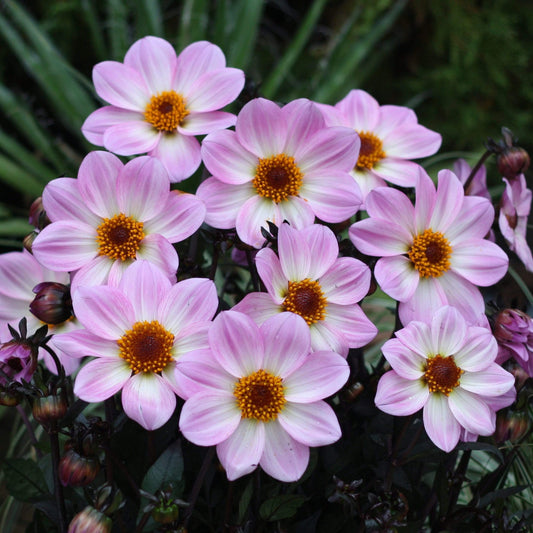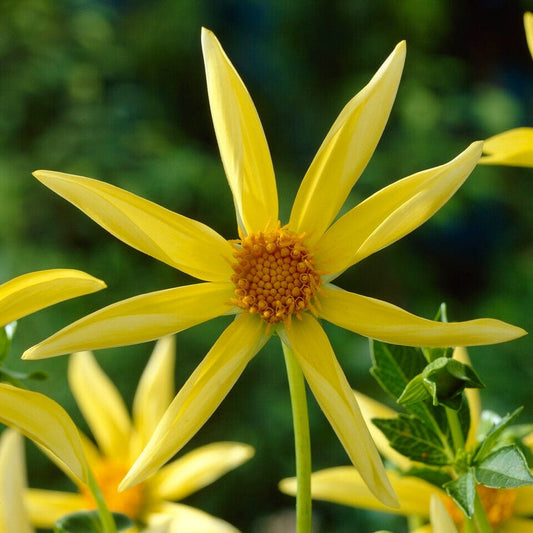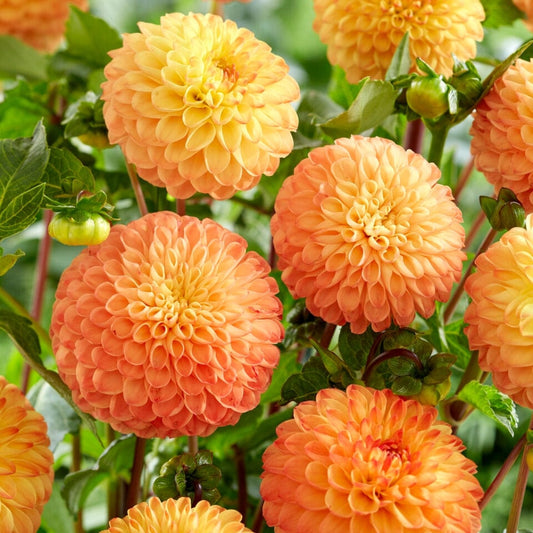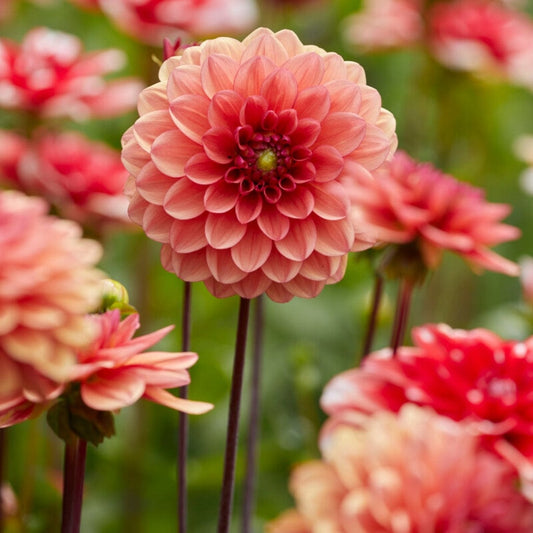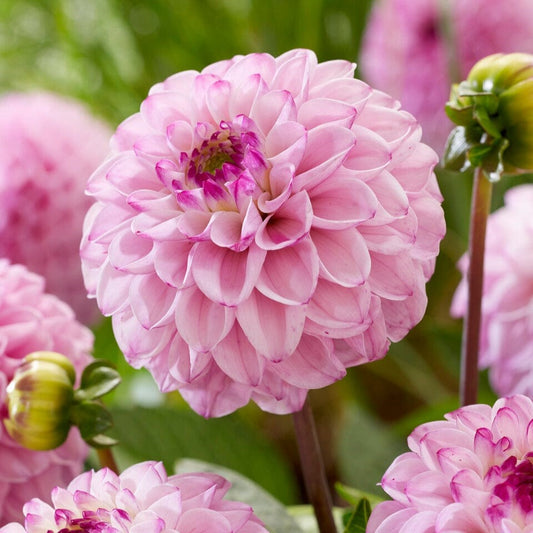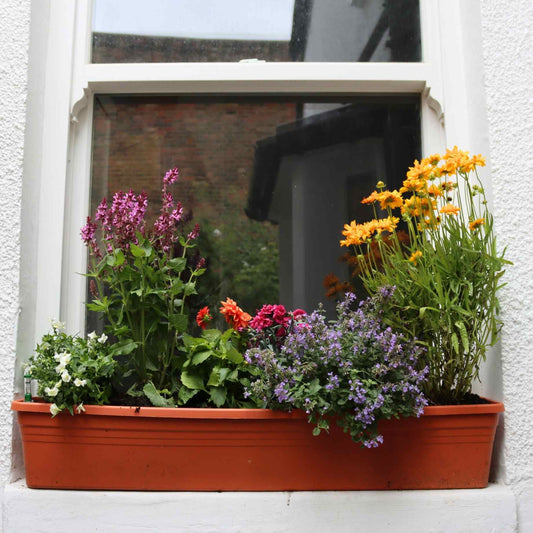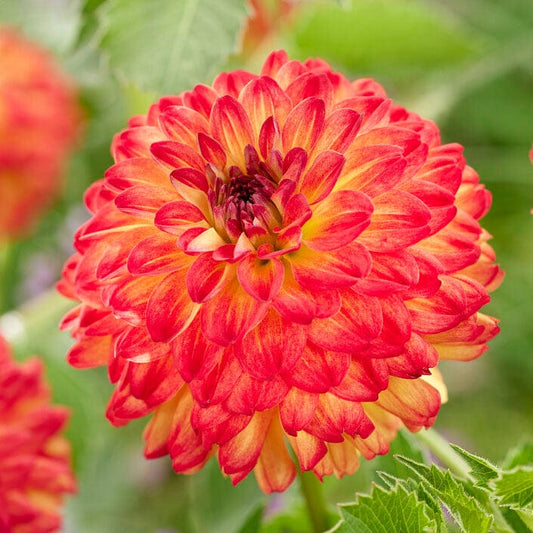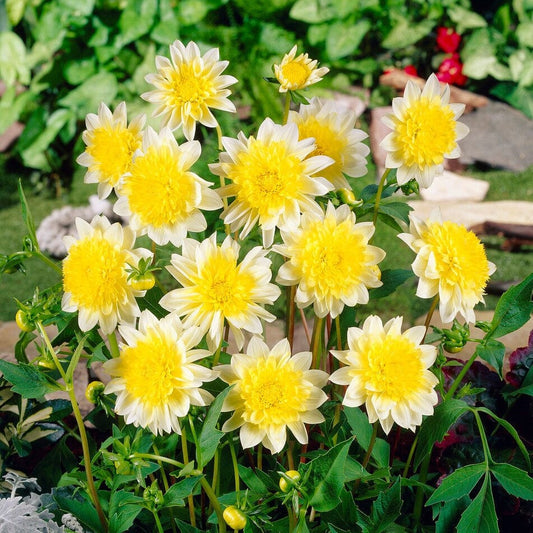How to Grow Dahlias: Everything You Need to Know

If you’re after something showy in the garden, you can do a lot worse than opting for some dahlias. These ostentatious perennials are real head-turners, dazzling with their variety of forms, bold colours and often impressive heights.
These herbaceous perennials are a bit different from many other flowering favourites, in that they grow from a tuber as opposed to the fibrous root system that many other perennials possess. In this post, we’ll walk you through all things dahlia-related, including how to plant, care for and propagate them. First, though, let’s explore the various types.
Jump to:
- Types of dahlias
- Planting dahlias
- Caring for dahlias
- Propagating dahlias
- Storing dahlia tubers over winter
Types of dahlias
There are many different types of dahlia, and though their general requirements in terms of position, watering, feeding, etc. are similar, the flowers you can get vary massively. The main types can be broken down into single, cactus, pompom/ball, anemone, decorative, waterlily, orchid and fimbriated. With over 57,000 accepted dahlia cultivars, there’s certainly plenty to choose from!
Did you know?
The dahlia is the national flower of Mexico, with cultivation dating back as far as the Aztecs, who were thought to have used the plant for both culinary and medicinal purposes. Their name for the dahlia was acocoxochitl, which roughly translates to ‘water pipe flower’.
Planting dahlias
Okay, so you’ve identified a variety (or four) that you really like the look of. Now it’s time to get planting your dahlia(s). You can either plant your dahlia tubers indoors at first, before bringing them outside, or you can plant them directly outdoors.
Starting your dahlias indoors
Dahlias are tender plants, meaning they won’t survive frosts. Because of this, start them off indoors or under glass in early spring, then transition them outside once the risk of frost has passed – early June is a good target to work around.
Plant your dahlia with the clump of saucisson-looking tubers at the bottom, and where they join (the cluster of ‘eyes’) should be nearest the soil surface, just a few centimetres below the surface is plenty. Before you fully transplant your dahlias outside, make sure to harden them off to acclimatise to outdoor temperatures.
Once moved outdoors, give your dahlia(s) a good watering, then apply a layer of mulch to help suppress weeds and lock in as much moisture as possible. Dahlias appreciate fertile, well-drained soil, so if your soil is on the poor/heavy side, consider amending it with some well-rotted manure or organic compost.
Planting your dahlias immediately outdoors
If you want to skip the indoor growing stage, or don’t mind planting a bit later, then you can get away with planting your dahlia tubers directly outdoors. This should be carried out no earlier than the middle of April. Plant your tubers as directed above. After a month-and-a-half or so, near the beginning of June, your dahlias will start sending up shoots above the ground.
What do dahlias like?
Generally speaking, dahlias grow best in sheltered, sunny positions where they receive at least six hours of direct sunlight per day. The best pH for dahlias is ever so slightly acidic – between 6.5 and 7 – though they can tolerate alkaline soils, too. They like moist but well-drained soil and dislike sitting in overly wet conditions (as this can lead to the tubers rotting).

Caring for dahlias
Dahlias are generally straightforward and easy-going in nature, but like any plants, they still need a bit of ongoing care to keep them looking their best. Dahlias like a good drink, so regular watering throughout the growing season is recommended. This is especially important for those plants grown in containers, as their compost will dry out more quickly.
Pot-grown dahlias also benefit from regular feeding, too (plants after my own heart). Apply a liquid tomato feed fortnightly throughout summer. For dahlias grown in the open ground, apply some compost to the soil just before you get your plants in the ground. This should be enough, however if you notice growth is poor, consider a slow-release fertiliser or purpose-formulated dahlia feed.
To promote greater flowering, make sure you deadhead your dahlias once blooms fade. By removing spent flowerheads every one or two weeks, you encourage the plant to funnel its energy into creating new flowers (as opposed to seed production). For varieties boasting particularly large, heavy flowers, you may want to stake your plant to avoid it flopping over.

Propagating dahlias
There are a couple of main ways by which you can propagate new dahlia plants: dividing tubers and taking cuttings.
Dividing tuber clumps
If you have a clump of dahlia tubers from the previous year, then you can split this into individual tubers. Clean the tubers of any straggly roots and remove any with broken necks. Then, split the clump roughly in half. Keep splitting until you have your individual tubers.
Note, it’s vital that when cutting off the individual tubers, you leave at least one centimetre of the original crown attached to each tuber, as this is the only section of the tuber from which ‘eyes’ will grow. You can then plant these as you would any other dahlia tuber.
Taking cuttings
Your other option to produce more dahlias is to take cuttings. This is nice and easy, just wait until you see healthy shoots appearing from your tubers that have been started indoors, then, using sterilised secateurs, snip some basal cuttings and pot them on. Once the risk of frost has passed, transplant them outdoors, making sure to harden them off first.

Storing your dahlia tubers over winter
Unless you live in a particularly mild part of the UK and apply a generous layer of mulch or straw, your dahlias aren’t going to be able to survive the winter months. With that in mind, it’s worth lifting and storing your dahlia tubers once the plant has finished flowering in the summer. Use a garden fork to lift your dahlia ‘clump’ after you see the foliage start to die back. Take particular care not to damage the tubers with the fork.
Rinse the clump off using a garden hose with spray attachment, then cut the stems so that you’re just left with the tubers. Dry them off by air-drying on a rack or patting them down with kitchen roll. Make sure they’re completely dry before the next step. Once you’re sure the tubers are dry, wrap them up in newspaper or bury them in dry, coarse vermiculite (dry compost also works). Keep them somewhere dry and free of frost, then use them the following spring.

Final thoughts
Whether you like your dahlias simple or spectacular, compact or colossal, by following the steps outlined in this guide, we guarantee you’ll be rewarded with the blooms you know and love. While you’re here, why not check out our post on Jenny’s incredible dahlia garden? We’ve also got more information on dividing perennials, so make sure to give that a read.
Last updated: 29/05/2025
